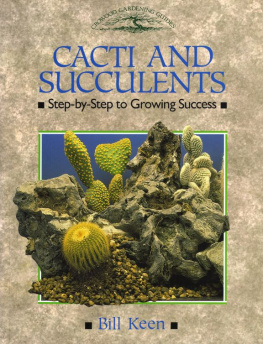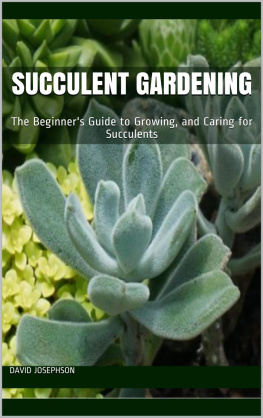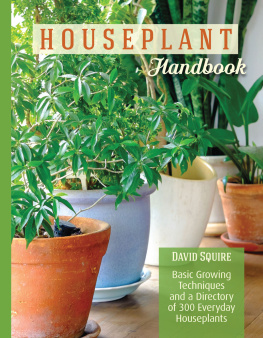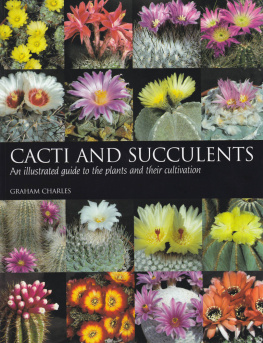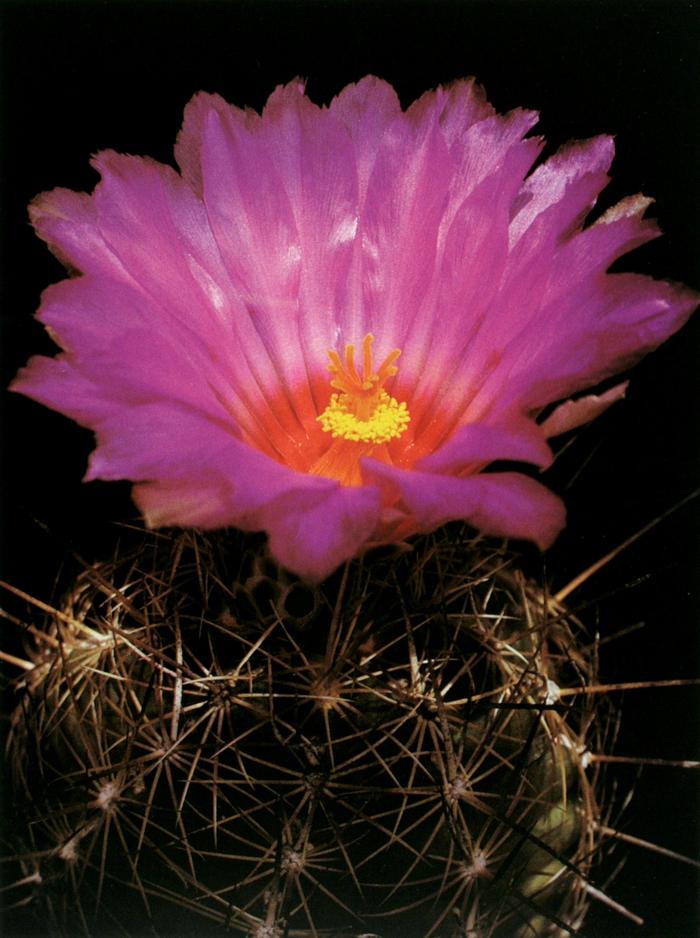ATTRACTIONS
Succulent plants have been a feature of the horticultural scene for a long time, yet their appeal has not been dimmed by the passing years. When first brought into cultivation, their exotic appearance made them objects of great curiosity . Contemporary accounts reveal the sense of wonderment induced in the minds of those acquainted only with the familiar garden plants of the day. The first flowering of some of those early introductions was often deemed newsworthy but then, as now, the press reports were sometimes greatly distorted.
Films and television have made the plants more familiar today. They are freely available from garden centres and chainstores, and one might assume that they would no longer retain their fascination. Yet one has only to watch the reaction of children at a flower show to realise that there is something elemental about the attractions of the plants. The children will pass magnificent displays of roses, chrysanthemums and the like with scarcely a glance, but very few will fail to linger in front of a display of succulent plants.
What is it about these plants that appeals? It is usually cacti that make the initial impact. Their appearance is so different from that of other plants that attention is drawn to them. Instead of slender leafy stems, the majority of cacti have swollen stems with spines taking the place of leaves. The association of the plants with a struggle for life in a hostile environment enhances their appeal. The climax comes when the first flowering cactus is seen. Cactus flowers have a delicate beauty which contrasts with the stark appearance of the plants, and they are often brightly coloured.
The range of forms among the cacti is considerable . Hollywood has made everyone familiar with the columnar organ pipe and flat-padded prickly pear types, but there are also cacti with globular bodies and many which offset to form mounds of clustering stems. In size they range from tiny plants with bodies less that in (1cm) in diameter to giants 40ft (12m) or more in height.
In addition to the cacti, many other plants have evolved to survive in arid regions. Some have an appearance superficially similar to that of the cacti, with fleshy stems and an absence of leaves. Some are rosette plants with fleshy leaves, while others compromise by having stout moisture-retaining stems and deciduous non-fleshy leaves. The variety of forms among these is even greater than among the cacti. Add the fact that many of the leaves are of delicate pastel colours, or covered with a powdery farina, or clad with soft hairs just appealing to be stroked, and one can understand why people find it difficult to resist touching the plants.
The exotic appearance of these plants might lead the uninitiated to think that they are difficult to cultivate. This is not the case: they are among the easiest of plants to grow. Apart from a small number, which are best avoided until experience has been gained by growing a variety of types, cacti and succulents are undemanding in their requirements. Given a porous compost, a position in good light, moderate watering and enough warmth to maintain a temperature just above freezing point, the majority can be expected not only to survive but to flourish and flower. It is possible to grow fine specimens on a windowsill, though a greenhouse makes life easier for the plants and their owner. Having evolved to cope with the rigours of a harsh natural environment, the plants are forgiving of neglect. A plant that can survive months of drought in the wild will not take exception to lack of watering while its owner is away on holiday.
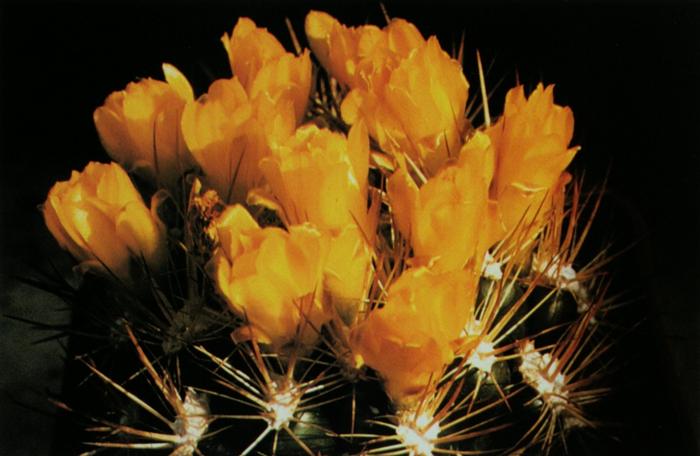
Fig 1 Weingartia corroana.
DISTINCTION BETWEEN CACTI AND OTHER SUCCULENTS
The phrase cacti and succulents has been in use for so long that it would be optimistic to expect that clarification would lead to adoption of a more logical term. It is, however, rather nonsensical since all cacti are succulents: it is akin to using a term dogs and quadrupeds.
The issue is further confused by the difficulty of defining the term succulent. To the layman, a succulent is a fleshy plant, but there are degrees of succulence and a grey area between the truly succulent and completely non-succulent plants. Since many of these borderline plants are highly regarded by collectors, a blind eye is often turned to their physical attributes and they are accepted as succulent.
It is easier to define a cactus: as a member of the botanical family Cactaceae. What then are the features that delimit this family? Possession of a fleshy stem and spines is not enough: some of the other succulents have evolved in a similar manner to cope with the same type of environment . It is likely, however, that a plant with a fleshy stem and spines is a cactus. Confirmation is obtained by studying the origin of the spines. If they emerge from a small pad-like structure, the plant is a cactus. The pad-like structure is called an areole, and it is this feature that distinguishes the cacti. Just to confuse the picture further, some cacti do not possess spines and the areoles are minute and difficult to recognise. The familiar Christmas Cactus falls into this category, but is a true cactus for all that.
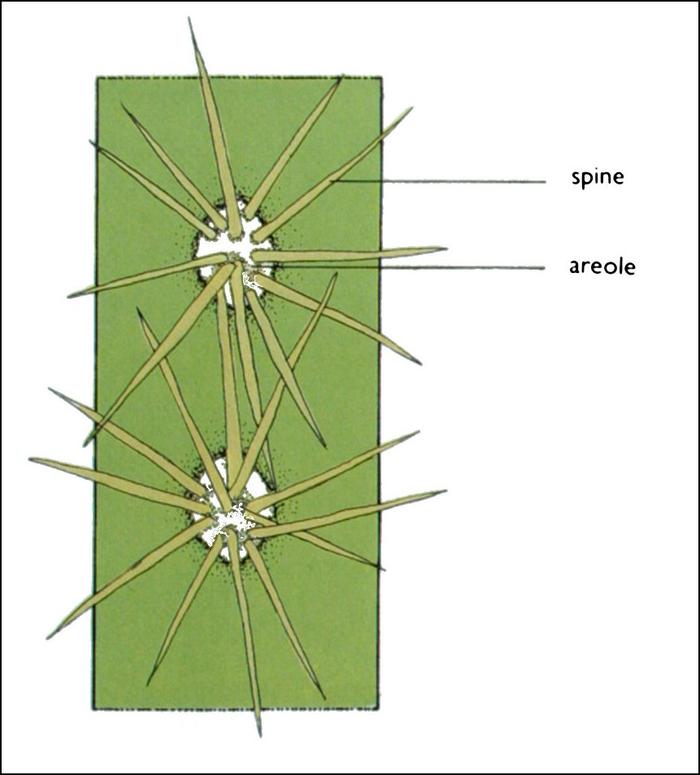
Fig 2 It is the areole that distinguishes cacti from other succulents.
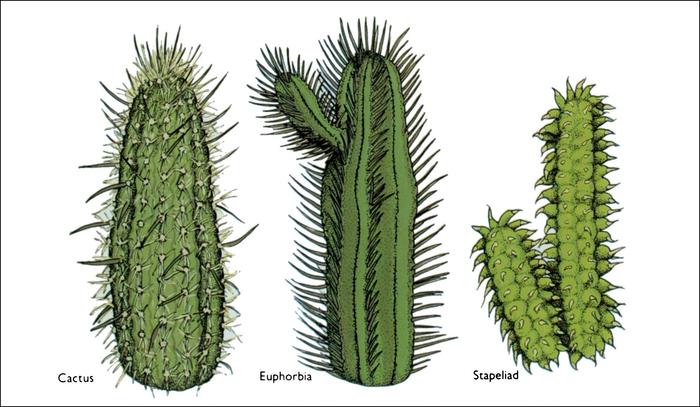
Fig3Threetypesofsucculents.
CLASSIFICATION AND NOMENCLATURE
One of the aspects of building a collection of succulent plants that bedevils the newcomer is the perceived difficulty of coping with botanical names. At first sight, scientific names often appear impossible to spell, pronounce or remember . It is tempting to think that, if the plants were given popular names, life would be much simpler for the collector.
Sadly, this is not so, though periodically efforts have been made to popularise common names. These attempts inevitably fail, as they lead to ambiguity . In many cases the same plant has been given several popular names. For example the familiar houseplant Aloe variegata has been given the popular names Partridge Breast Aloe, Tiger Aloe, Zebra Aloe and Mackerel Plant among others. On the other hand, different plants have been given the same popular name. For example, both the epiphytic Aporocactus flagelliformis, with slender trailing stems, and the globular Pediocactus simpsonii have been given the popular name Snake Cactus. Although popular names are often descriptive of the plant, many are not: what, for example, is to be made of Red-headed Irishman for Mammillaria spinosissima? Try asking for that in a garden centre!
An unambiguous system of identifying plants (and animals) was proposed by Linnaeus in the eighteenth century and has since become the standard. This is the binomial system, which uses a generic name followed by a specific epithet as a unique identifier. As the names are based (in the majority of cases) on the dead classical languages Latin and Greek, they are unaffected by the changes in meaning that occur as live languages develop. This makes the system equally acceptable in all parts of the world.

